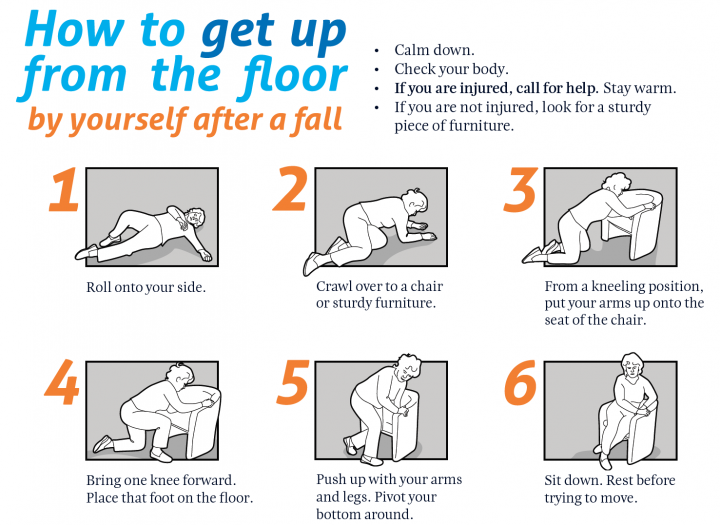Everybody falls down. We slip on ice, trip over unexpected obstacles, fail to negotiate a step up or down, lose our balance. Here are ways to prevent falls and reduce our risk of falling down.
We fall inside and outside. We fall doing household tasks, while shopping, chasing a hat blown off by the wind, during strenuous activities, during vacations, and just strolling along.
Falls are the leading cause of injury in the U.S., although the rate and circumstances differ among genders and age groups.
- One in three Americans over the age of 65 falls each year, and approximately 30,000 elders died as a result of a fall in 2016.
- One study found that more than half of all college students fell over four months, more than 20 percent fell more than once.
- Children ages 19 and under account for about 8,000 fall-related visits to hospital emergency rooms every day.
Why Do We Fall?
The reasons for falling are extremely varied and depend uniquely on the situation. Interestingly, among all groups except men 18-44, walking (especially walking and talking), is the predominant activity that precedes a fall, followed by vigorous activity, and falling from a height.
Other causes:
- Risk-taking
- Poor lighting
- Slippery or uneven surfaces
- Uncorrected vision problems
- Floppy or slippery-bottomed footwear
- Unsecured area rugs
- Medications or interaction between/among medications
- Extension cords, protruding obstacles
- Muscle weakness, joint instability
- Loss of sensation in feet or legs
- Gait and balance problems
- Cognitive problem/confusion
A growing cause of falls: folks attempting selfies in exotic/unusual settings.
Preventing Falls
Even a cursory glance at the list shows that mindful actions and minor changes inside the home and around the grounds could prevent many falls. For example:
- Don’t text, read/answer email, or talk on the phone while walking.
- Wear sturdy footwear (or anti-slip socks indoors).
- Use handrails, especially going down stairs.
- Install handrails and grab bars where slips or falls are most likely.
- Improve the lighting in areas (inside or out) where people could slip and fall.
- Add non-skid backing to area rugs and carpeted stair treads.
- Keep children’s and pets’ toys off the floor, especially the small ones that are hard to see.
- Keep outdoor walks de-iced during winter.
- Place sand, wood chips, or other soft-landing materials under children’s outdoor play equipment.
A tip for folks of all ages and conditions: Practice simple balancing techniques on a regular basis.
- Walk sideways back and forth a few times.
- See how long you can stand on one leg at a time.
- Practice walking heel to toe in a straight line.
Aimed at elders, these balancing exercises are useful for people of any age.
Of course, regular exercise, including strength training (especially “core” strengthening) will help maintain balance and prevent falls throughout life.
Getting Up After a Fall
Anyone can have difficulty getting up after a fall. Always, lie still for a few minutes to observe your body and see how you feel.
Then roll onto your side and rest. Roll by turning your head in the direction you want to roll, move your shoulder and arm, then hip and leg in the same direction.
See the poster below demonstrating how to get up from a fall. Between each step, always take moments to rest and let your blood pressure adjust.
Credit: Alberta Health Network
Most of the tricks presume a fair amount of arm, shoulder, and leg strength. They also presume no injuries from the fall, no disabilities, no severe pain, and full cognitive awareness.
Pregnant women, people with physical or cognitive disabilities, and older folks who may have gained weight and/or lost muscle mass, might not be able to use them effectively. In such cases, consider carrying a cellphone or a medical alert device.










